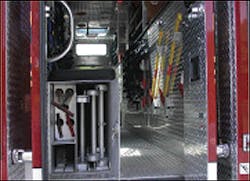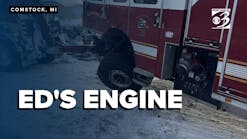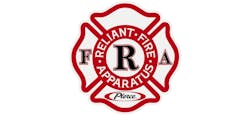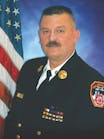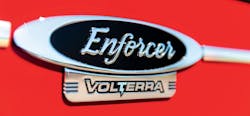In the July 2005 installment of The Apparatus Architect, we began our discussion on some of the considerations and design criteria when developing specifications for a rescue squad apparatus.
One of the most important items for your apparatus committee to consider is developing a comprehensive tool and equipment list, which should include all of the current tools as well as any planned equipment acquisitions.
After planning room within the rescue body for fixed equipment such as generators, a light tower, an air cascade, and fill stations and reels, you can begin to assign locations for these major components. Once all tools and equipment are accounted for, you want to ensure that you have at least 15% to 20% of the body cubic foot area left open for future expansion and new tools, which may be acquired as tool technology improves or the mission of the vehicle changes. This expansion area can be located anywhere on the body and should be specifically designated as an open location for future use.
Many times, departments make the mistake of pre-determining a specific length of a rescue body, assuming that if they purchase a new apparatus that is two to three feet longer than the present unit, tools and equipment will automatically fit into place. Unfortunately, many of the tools and equipment that are carried by rescue squad units do not fit into standard-size compartments and the clear door opening measurements become critical when sizing larger equipment such as rescue struts and hydraulic tools.
Each piece of equipment that is to be carried should be measured and weighed prior to determining where the tools will be located within the body. Taking the time to measure and weigh the equipment will pay off when it comes time to identify a location for these tools inside of the body compartments.
When members of the Berwyn Heights, MD, Volunteer Fire Department and Rescue Squad set out to develop the specifications for a new rescue squad, they enjoyed the advantage of having a great deal of experience with operating past units. After an unfortunate accident with a 1999 Seagrave/Saulsbury squad (see The Apparatus Architect, July, 2005), the department worked to developing specifications for the replacement rig. Since a number of members had experience with apparatus, including several personnel who worked for the District of Columbia Fire Department, there was an excellent knowledge base that was used to develop the over 100 pages of specifications for the new rescue squad.
Once the bid specifications were completed, the department sought proposals for the new rescue. Three apparatus manufacturers submitted bids. After careful analysis of each proposal, the department awarded the contract to Seagrave for a two-door, tandem-axle chassis and Marion Body Works for a 25-foot stainless steel rescue body. The chassis is a Seagrave model TG-00DA and is powered by a Detroit Diesel Series 60 engine through an Allison five-speed transmission with a gross vehicle weight rating of 61,500 pounds. The chassis is built on a 218-inch wheelbase and the unit has an overall length of 36 feet, 11 inches. The cab features a reinforced FDNY-style bumper and vertical exhaust with a Will-Burt light tower nested between the cab and the front of the body. The stainless-steel cab and the reinforced bumper were built to enhance crew safety. These components, together with proper mounting of all equipment inside of the rescue body, were credited with reducing the injuries to the crew riding on the squad on the day of the accident in 2002.
The new squad is equipped with dual generators, including an Onan 35-kilowatt PTO-driven unit and a Koehler 20-kilowatt diesel-driven unit. The body has two 1,500-watt lights on each side and two 500-watt telescopic lights mounted at the rear, as well as a 9,000-watt telescopic-style light tower. For vehicle stabilization work, the squad has a 12,000-pound front-mounted electric winch and a 20,000-pound hydraulic rear winch with side body mounts for a 5,000-pound portable winch.
The stainless steel rescue body was designed with 10 exterior compartments outfitted with an assortment of reels, including four electric cable reels that carry 200 feet and 300 feet of 10/4 cable, two 300-foot low-pressure air reels for tools and a four-bottle cascade system with a Space Saver two-bottle fill station. The squad is also equipped with an Amkus Ultimate rescue tool system that supplies five 125-foot hydraulic reels within the forward compartment on the body.
A great amount of thought went into the design of the interior of the body. A crew bench seat accommodates six riding positions, four large storage cabinets are equipped with heavy cargo netting and all hand tools are mounted on stainless-steel shelves with appropriate 9G-rated brackets. The body is provided with both heating and air conditioning, as well as a roof-mounted escape hatch and sliding body windows. The complete tool and equipment list for the unit is quite impressive and the mounting systems used provide ready access to all equipment and make
